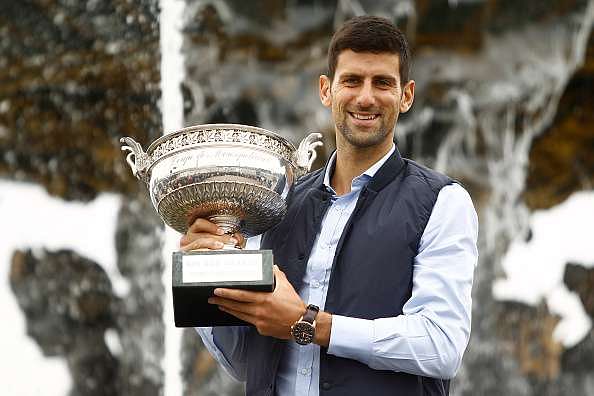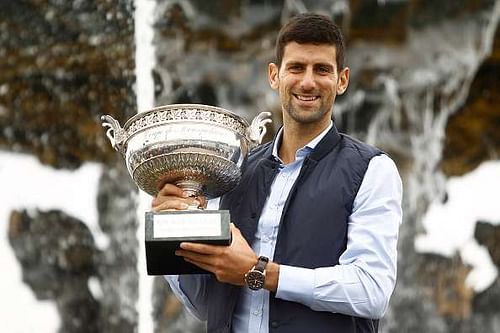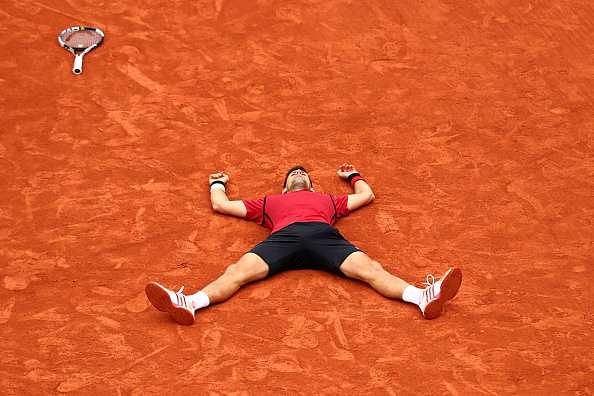
Just how good can Novak Djokovic become?

Novak Djokovic’s charge for greatness among the greats is proceeding at an unprecedented pace. In the past year, he has taken his Grand Slam tally from eight to 12, cut further into Roger Federer’s record of 302 weeks as number one, and most importantly, completed a quest that had gone unfinished for 47 years: holding all four Grand Slams at the same time.
The Serb is irrepressible at the top of the men’s game. With the French Open finally in his pocket after years of torment, he has now achieved almost everything. Gold at the Olympics and a set-completing Masters 1000 triumph in Cincinnati are the only two boxes left unticked – and he’ll have a chance to snaffle those this summer.
Defining the GOAT
We have a penchant for debating the greatest of all time; the GOAT, as we so affectionately call them. Contrasting eras is often a fruitless task, and it becomes even more so the further removed they are. Moreover, the argument that “Player X wouldn’t have won as much as Player Y if they had to play when Player Y did” is mind-numbingly persistent – you can only beat who’s put in front of you. But that doesn’t stop us trying to diligently crunch the numbers, and determine sport’s kings and queens. So let us commence again.
Statistically, Federer is the greatest to have ever swung a racket – or is he? Forget the rest, Slams are the real test. The Swiss tops the tree with 17 in the Open era, but the rarely-mentioned caveat is Rod Laver. The legendary Australian acquired 11 Grand Slams, along with eight Pro Slams – the professional tournaments contested pre-Open era, when only amateurs were allowed to compete at Grand Slams. Eleven and eight makes 19 majors and, if you add on two calendar year Grand Slams, you have a more decorated champion than the Fed.
However, factoring in Pro Slams is a tennis anorak’s prerogative. For the wider audience, Open era accomplishments are what matter; thus it is Federer’s records which are the benchmark. If Djokovic beats those, he will have won the basic GOAT argument. Hence, the ultimate question: can he?
Winning past 30
It is commonly accepted that winning Grand Slams past the age of 30 is mightily difficult. Despite Federer’s seeming agelessness, presuming he doesn’t win another, he picked up just one after his 30th birthday (2012 Wimbledon) and his penultimate (2010 Australian Open) came at 28. Djokovic is already 29 and only has 12, yet it’s safe to assume traditional logic doesn’t apply here.
The Djoker towers over the ATP and has perhaps only played at a higher level in 2011. Combine that with a lack of rivals – he has Federer’s measure in finals, Rafael Nadal is fading, Andy Murray is unable to down him at the Slams and tennis’ youth aren’t improving quickly enough – and it’s clear that Djokovic will be favourite for every tournament he enters for the next two years, if not longer.
Six of the last eight majors have been snared by Djokovic, and while a similar haul from the upcoming eight would be equally phenomenal, it’s imaginable. At worst, he is primed for a minimum of four – that would follow the pattern of him winning half of the Slams since he became a world beater in 2011.
And, even if he isn’t favourite for Slams after that period, there’s no reason why he can’t be in the mix for another three, four, maybe five years – just look at Federer, whose still knocking on the door that only Djokovic has managed to keep shut. Sixteen is a conservative final estimate: a number which puts him right in the GOAT conversation. Really want to push it? He could win 20.
Djokovic’s unprecedented control of top spot

The rankings are an accurate illustration of just how far Djokovic is ahead right now. He sits more than 8,000 points clear of Murray on 16,950, and has earned more in 2016 than third-placed Federer has in the past 12 months. That the bulk of the tour is played on hardcourts – his best surface - helps, but his clay proficiency puts him second only to Nadal on the red brick in the ‘Big Four’ era. Djokovic is adept on grass too, winning Wimbledon three times in five years. As a career Slam indicates, there are no glaring weaknesses.
Such solidness has enabled the 29-year-old to take a stranglehold over the rankings since 2014. With more than 200 weeks at the top secured, the prospect of eclipsing Federer has shifted from improbable to quite possible. Even if his lockout of the Slams doesn’t continue, it’s tough to see who can outperform Djokovic 0ver a 12-month span in the next two seasons or so.
While his fitness was an issue in days gone by, injury has never plagued the Serb – he has played in every Grand Slam since making his debut at the 2005 Australian Open. Nadal’s charge for 17 spluttered and halted – terminally, perhaps – at 14 after a smattering of afflictions; there is no signal Djokovic will suffer the same fate.
What’s next for Djokovic?
But all-time records are still some way in the future. Much more pressing for Djokovic is his attempt for the calendar year Grand Slam. After becoming the first man since Jim Courier in 1992 to get half way there, it will be firmly in the Serb’s sights. At Wimbledon, Murray looks the biggest threat given Federer’s injury woes, while only a mental block can deny him at the US Open. On recent evidence, neither lapse appears likely. The ball is firmly in Djokovic’s well-guarded court.
His charm offensive at Roland Garros was the latest proof that Djokovic craves the adoration Federer and Nadal are drenched with. It’s not that he isn’t loved; he has a passionate and raucous fan base. But there’s still a lingering feeling that crowds consider him the insurgent to the Federer and Nadal party, rather than tennis’ hottest property.
The desire for appreciation makes it all the more important for Djokovic that he captured four consecutive Slams – he now has an accolade they don’t. If he can scoop the calendar year Grand Slam, that’ll be yet another precious feather to the cap.
There is still, of course, a long way to go. Tennis matches don’t win themselves, and the road ahead is unknown. But the trends and present-day state of play allows us to make some assessments. The Serb’s Slam-winning run is destined to carry on, there’s no major he cannot prevail in, and his authority over the rest of the ATP is stronger than ever.
Thus, it’s reasonable to predict that Novak Djokovic will eventually be regarded as the greatest male tennis player of all-time. On paper, at least.